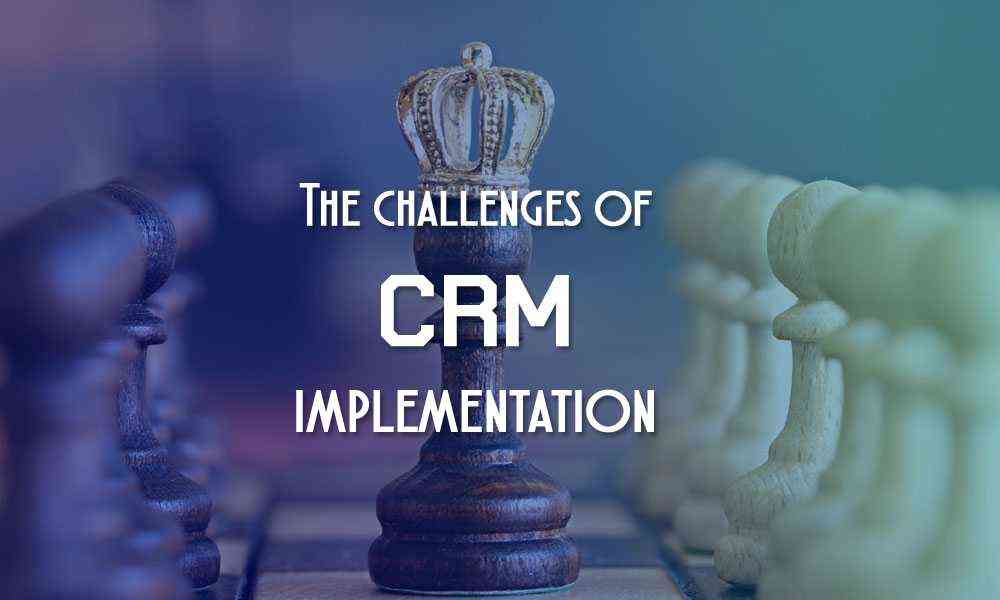Small and medium businesses landscape has changed dramatically over the decade. Gone are the times, when they have lame excuses like –
“We don’t have enough customers or sales team
OR
We don’t want to invest in software right now
OR
The internal resources are not enough to handle the CRM.
There were more such excuses to be added, if we talk about CRM implementation few years back. Now SMEs have witnessed how CRM changes the way they do business. They have evaluated their business well and created well defined areas of concern as well as improvement.
On a positive note, focus has shifted from just making profits to long term contracts with clients, from quantity to quality of customer service, from plain documentation to utilizing and analyzing information and proper flow of communication in all the crucial departments like sales, marketing and customer service who works on front foot of business. Unlike, there are still firms or businesses facing challenges in changing the way they work. Sales staff adoption, scalability of business, lack of strategic vision, finding the right implementation partner and pricing are major factors which come up at the very first thought.
Is there anything which can be done to address these challenges? Or they have to keep on postponing their decisions of getting CRM in place for them?
I believe there are plenty of options today available to address these implementation challenges of SMEs. And as said, improvement starts with ‘I’. It means for a business they have to evaluate their present workflows and gaps which can be filled by CRM system, when in place. Here are some of the ways which will help you in solving the above mentioned challenges –
1. Lack of strategic vision – As said in nearly each and every article, CRM is not just software, it’s more than you can imagine. It changes the way you deal with your prospects, it changes the way your marketing works, and it enhances your customer service parameters. These are just the most visible and bold differences you will see. But there are many unseen improvements which will become visible and prominent over the time you ingrain CRM into your business. One needs to have a strategic vision whether they want to witness such changes with changing dynamics of businesses. Whether top down or bottom up approach, CRM is for everyone in the organization and thus, should be strategized properly. Well defined and documented needs and objectives with clear line of action and people involved will definitely help you in starting with it. Later on as you move in process of evaluating different vendors and products available you can explain them your current business scenario and what you are looking for. This will help them as well as you in creating a road map towards CRM implementation, adoption and usage.
2. Sales staff adoption – Make them understand what challenges CRM can solve for them. Right from the point of creating contact, addressing opportunities and customer retention, CRM can do it all for them. Every sales guy understands the fact that customer retention is easier than getting new customer and CRM facilitates the same. It can be a single platform to manage their contacts, access them whenever required and remember about the follow-ups, stage of discussion, and standardize your sales process. Moreover CRM system generates their weekly or monthly status reports or updates without any extra efforts. With this they can devote their mental strength in getting customers rather than remembering data, generate reports from excel or evaluating their sales funnel. Giving examples of sales success with CRM or incentivize them to use CRM better can work positively.
3. Scalability of business – The answer for this challenge lies in selecting the right CRM which can be scalable and flexible to accommodate all your increasing needs in future. As the business grows, there should be room for integration and customization according to the changing business requirements. Keep in mind the rise in cost and price with every integration and customization you will do in future. One such CRM software is SugarCRM which can be scaled according to business requirements using the same licensed edition one started with.
4. Finding the right implementation partner – This one is crucial and has to be right fit with your organization goals. There are so many implementation partners available in the market for whatever CRM option you opt for – Be it Salesforce, SugarCRM, Microsoft, Oracle etc. Some have expertise on a single CRM product or they can have expertise over more than one. The right thing to evaluate here is have they handled organizations like yours previously, what is their success rate, are they just implementing it or helping you to adopt and ingrain in your work processes also. The implementation part can be done my many companies but one should be able to provide you with right training, resources to train you, yourself and your team.
5. Pricing – There are lots of options available in CRM market to handle the challenge of pricing for getting the right one for you. You can go for hosted or licensed version based on your requirements.
I have tried and covered all possible concerns and ways of mitigating them in the above article. If you are thinking of getting CRM and have concerns at your end, feel free to drop us a mail at marketing@savantis.com, we will try our best to address the same.

